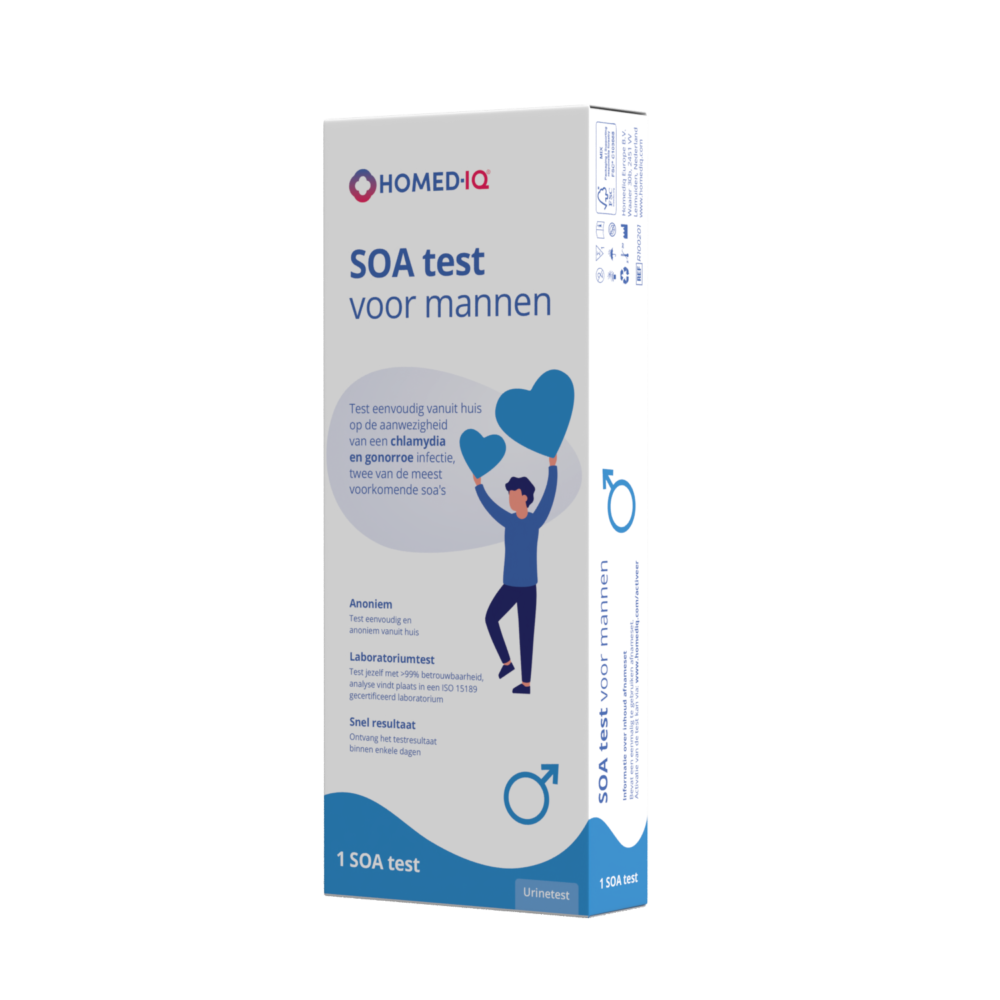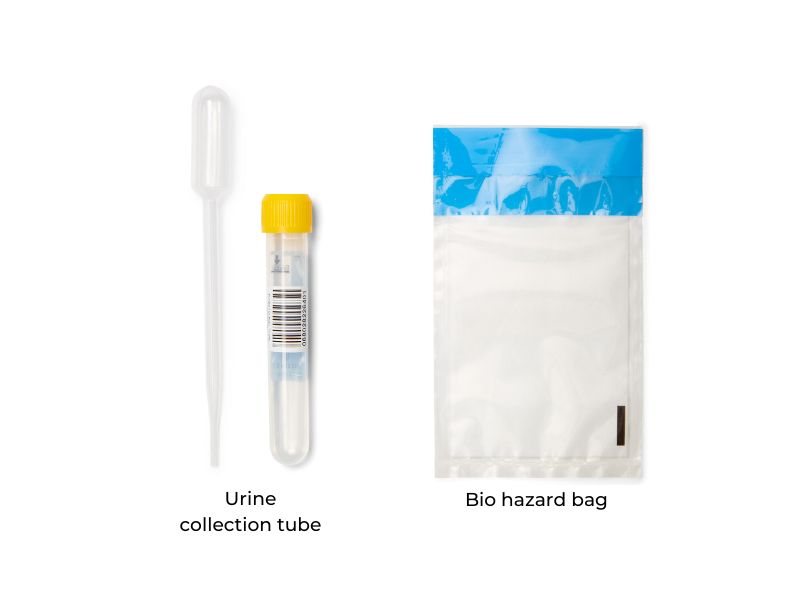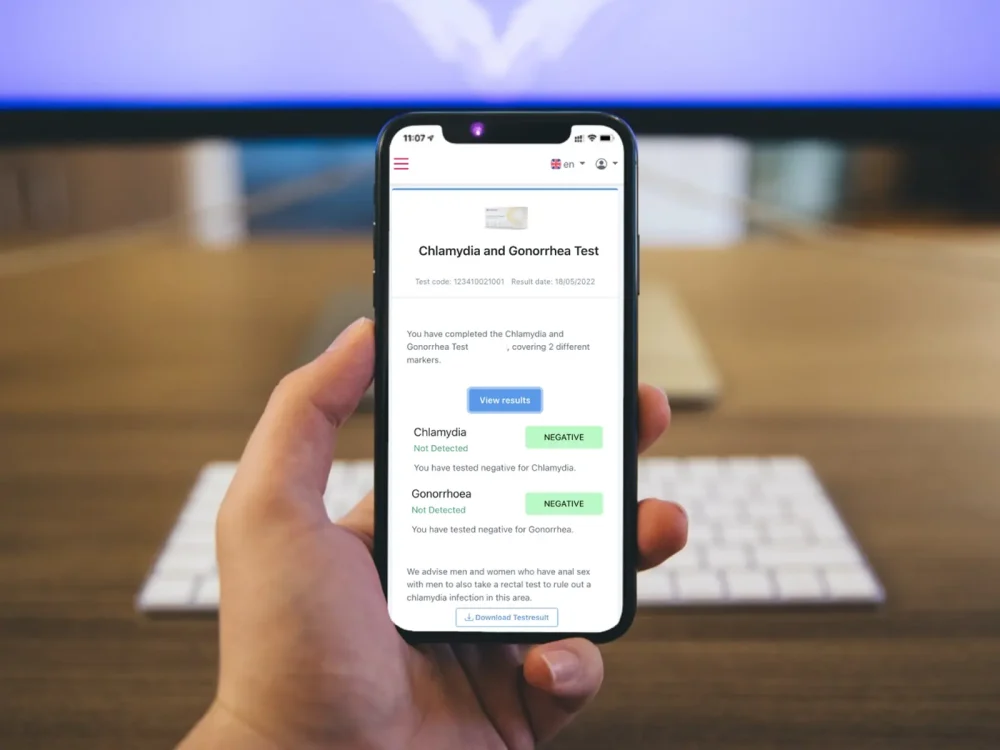What does the result of this test mean?
Anyone who orders a home test from us will receive a complete laboratory report.
What does a negative test result mean?
A negative test result means that no chlamydia or gonorrhoea were found in the test material you supplied and that no STI treatment is required.
What does a positive test result mean?
A positive test result means that one or more STIs has been found and that treatment is needed. For your own health and to prevent the spread of STIs, it is important that you receive treatment if you test positive.
In the case of a positive test result, you can take the test results to your own doctor for treatment. You should also warn all your sexual partners to further prevent the spread of STIs. They can then have themselves tested and, if necessary, be treated.
How results are shared
We understand that medical test results can be confusing and difficult to interpret. That’s why at Homed-IQ we make it as easy as possible for you to understand your test result.
In your personal online dashboard you can view your laboratory report as well as a clear and simple explanation of your results. We provide insight into whether you have tested negative or positive for each individual STI.
How soon will I receive my test results?
You will receive the test result very quickly, often within one to three working days after your sample has arrived at our certified laboratory.
What is an STI Test for Men?
This is a test for chlamydia and gonorrhoea, two of the most common sexually transmitted infections (STIs). The test contains materials and instructions for taking a urine sample. After collecting the sample, mail it to Homed-IQ’s certified partner laboratory. You will receive the results within a few days. It couldn’t be easier!
What’s in the test kit?
- Instruction manual
- A urine collection tube and pipette
- A protective transport bag
- A return envelope
When can you test for chlamydia and gonorrhoea?
The window period is the time between when you were infected with an STI and when it is detectable with a test. Every STI has its own window period. If you test for an STI before the window period has passed, you may test negative even if you are infected. See below for more information about the specific window period per STI and determine when you can reliably use this test.
What is the window period for chlamydia and gonorrhoea?
Chlamydia: After 14 days
Gonorrhoea: After 14 days
Source: Nederlands Huisartsen Genootschap
Introduction
Sexually Transmitted Infections (STIs) are infections transmitted through sexual contact. They can spread through contact with the penis, vagina, anus, and occasionally through the mouth or fingers. Often, STIs show few or no signs at all. Yet, STIs are not without risk, and an untreated infection can cause uncomfortable symptoms or serious damage to the body if not addressed. Therefore, regular testing is important to not only stop the spread of these infections to others but also to ensure potential infections are treated promptly.
Chlamydia
Chlamydia is a sexually transmitted infection caused by the bacteria Chlamydia trachomatis. This bacteria can cause an infection of the urethra, penis, rectum, eyes, or throat. Chlamydia is transmitted through vaginal, anal, and oral sex, or other contact with infected genital fluids. Left untreated, chlamydia can spread to the epididymis in men. This can cause pain, fever, and in rare cases, infertility. Chlamydia is a very common STI and is treatable with antibiotics.
Gonorrhoea
Gonorrhoea is a highly contagious sexually transmitted infection caused by the bacteria Neisseria gonorrhoeae. Not everyone with gonorrhoea develops symptoms, making early detection difficult. Left untreated, gonorrhoea can cause inflammation of the epididymis or prostate in men. In rare and severe cases, gonorrhoea can enter the bloodstream and cause infections in other parts of the body. This can lead to joint inflammation, blood poisoning, or meningitis. Gonorrhoea is treatable with antibiotics.







